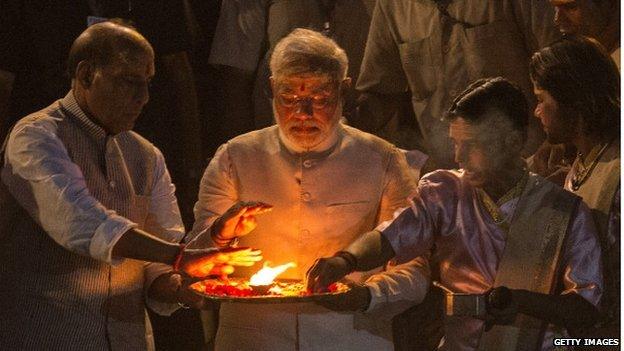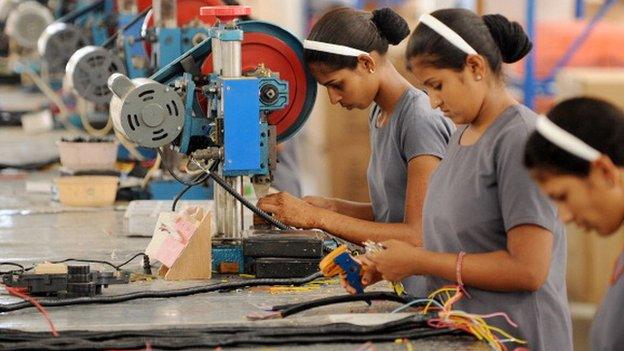India's new government faces some hard budget choices
- Published
- comments

Can Narendra Modi rekindle India's economy?
Indian Prime Minister Narendra Modi swept into power on promises to revitalise the economy. Voters' expectations are high that the government can deliver growth of 8%, the level that's needed to create enough jobs for the 13 million labour market entrants each year.
That's a tall order, though, as economic growth has languished below 5%, while there was concurrently high inflation of about 10%, which has squeezed incomes in a country that only recently exceeded the income level of one of the poorest countries in the world.
The government has already tempered expectations around growth, which they say will remain below 6% and won't reach 7% for at least another two years. That will be tough for a country with 1.25 billion people with half of that sizeable population below the age of 25.
Nevertheless, voters are looking expectantly to the first budget of the Modi government. But they may not like the choices that the government takes in order to boost growth.
The most eye-catching item is the $40bn that the government spends to subsidise food, energy, and fertilizer. It's sizeable, at more than 2% of GDP, and the aim is to reduce it to below 2%.
At the same time, there is also pressure to cut the budget deficit. The gap between what the government takes in and what it spends is one of the reasons why India has fallen out of favour with international investors, who dubbed the country one of the "Fragile Five" economies at risk of a potential crisis.
India's Finance Minister, Arun Jaitley, says that he accepts the previously stated target for the fiscal deficit of 4.1% of GDP, but meeting it will be difficult.
Given the scale of the challenge, he is only aiming to cut the deficit to below 4% within a couple of years, to 3.6% of GDP in the financial year 2015-16.
To achieve this, fuel and food subsidies will become more targeted, while the budget shortfall will be partly plugged with a new goods and services tax that they are seeking to introduce by the end of the financial year. Higher taxes will hit wallets and may even add to inflation.
Digital India
Mr Modi's party also wants to cut subsidies in order to free up funds for much needed investment in infrastructure, which would help the industrialisation process.
It's one of the modernisations that he is aiming for and what he did when he ran the state of Gujarat, which I have written about before.

The new budget is designed to get India's economy running faster
Given the high expectations around boosting growth, it's no wonder the budget also veered into announcements about being more open to foreign investment - a perennial debate in India.
Opening up the insurance and defence sectors more, to allow 49% foreign ownership, is one sign that the Modi government will be more open to foreign capital to help the economy. Pronouncing an "investor-friendly tax regime" is an attempt to encourage domestic businesses, too.
Urbanisation is another push that is reminiscent of Mr Modi's policies in Gujarat, so $1.13bn has also been allocated to build cities and there will be a "Digital India" programme.
Finally, no budget is complete without a headline-generating announcement. Mr Jaitley is promising a toilet in every Indian home by 2019. Given the immense challenges for women in the country, this would surely be welcome.
Despite the bold proclamations of policy and ambition, it's a budget that is taking small steps to cure the long-standing issues of the deficit and inflation. That's probably all that can be done realistically.
Most importantly, to get the economy growing more quickly will require that businesses, domestic and foreign, have confidence to invest in India again.
To do that will also require more than a pronouncement about being business-friendly and require reforming the cumbersome "licence raj", which certainly won't happen quickly.
As with all budgets, it will come down to political acceptability and implementation. Voters elected a new government to see results.
So in addition to assessing the hard choices that have been taken around growth, subsidies, taxes and investment, it will come down to implementation. For India with its vast number of states, that is a challenge in and of itself.